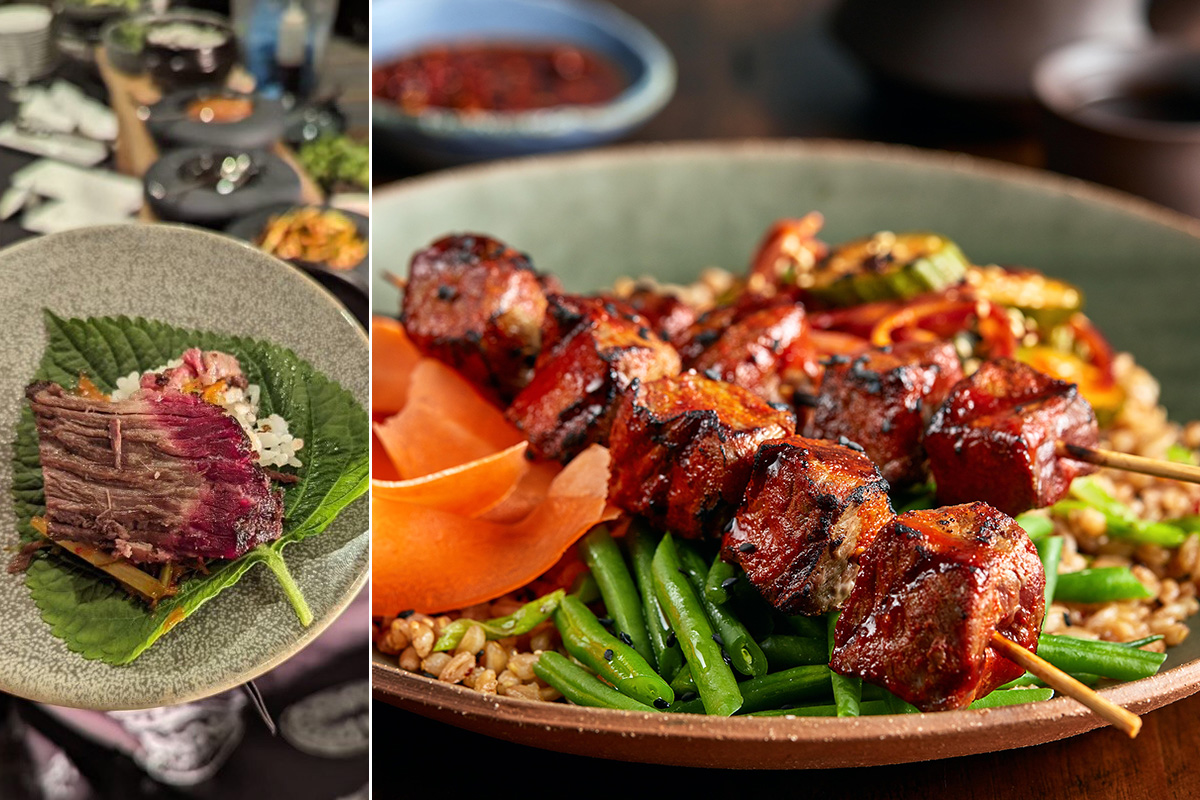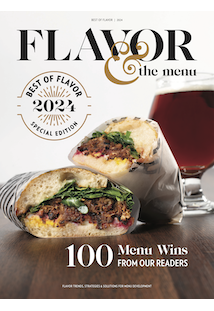
SPONSORED CONTENT
Aussie Beef Carries Korean Comfort
Why Korean might be cuisine of the year
SPONSORED CONTENT
Aussie Beef Carries Korean Comfort
Why Korean might be cuisine of the year
By Flavor & The Menu
May 21, 2024
By Flavor & The Menu
May 21, 2024
Korean culture has been growing in influence in North America for many years now, from music (K-pop) to streaming (Squid Game) and movies (Parasite). All the while, our tastes for Korean food have grown, too. It’s all led to why experts at trendspotting agencies like Carbonate and others have pegged Korean as their “Cuisine of the Year.”
Signs of Korean food’s rise are in the data: Searches for gochujang hit a five-year high last April, according to Google, and four times as many Korean restaurants made the MICHELIN Guide New York in 2022, compared to 2006. From Atomix in New York City to the latest outlet of Baekjeong in San Jose, Calif., new Korean establishments have been some of the hottest restaurant openings in recent years.
Korean’s rise makes sense when you consider the core elements and popular dishes are centered on foods consumers already love — grilled meats like bulgogi, sweet-spicy Korean fried chicken, and bowls like bibimbap. Add in the heavy umami undercurrent, fermented ingredients like kimchi, and the acidic balance from pickled and preserved garnishes, and you’ve got a perfectly modern flavor experience.
3 Flavor-Forward Takes on Korean
Pairing a hugely popular, craveable protein like beef with Korean flavors already makes for an easy sell. Make it Aussie beef — whether grassfed or Wagyu — and you have a dynamite combination. Here are three Korean-inspired dishes from chefs using Aussie beef for inspiration:
1
Australian Striploin Mushroom Japchae
Jae Lee, chef/owner of Nowon in New York City combined grassfed Aussie striploin with a Korean japchae noodle dish from the Nowon menu. The noodle dish was originally vegan, but the mushrooms and umami profile gets amped up with the addition of grassfed beef. Get the recipe here.
2
Korean Aussie Beef Bowl
Here, chef Kevin Felice of 40North Restaurants does an Italian-American’s take on bibimbap, the popular Korean rice bowl. Grassfed striploin is marinated in honey and gochujang, then skewered and grilled. Felice uses farro as a base instead of rice and tops it with an assortment of veggies and pickled cucumbers. Get the recipe here.
3
Gochujang-Cured Brisket Ssam
Daniel Craig, executive chef at The Westin Harbour Castle in Toronto developed a brisket ssam dish using a housemade ssamjang, gochujang-cured and smoked Aussie grassfed brisket and scallion kimchi. He served it with betel leaves for wrapping. Learn more about this dish.
Korean culture has been growing in influence in North America for many years now, from music (K-pop) to streaming (Squid Game) and movies (Parasite). All the while, our tastes for Korean food have grown, too. It’s all led to why experts at trendspotting agencies like Carbonate and others have pegged Korean as their “Cuisine of the Year.”
Signs of Korean food’s rise are in the data: Searches for gochujang hit a five-year high last April, according to Google, and four times as many Korean restaurants made the MICHELIN Guide New York in 2022, compared to 2006. From Atomix in New York City to the latest outlet of Baekjeong in San Jose, Calif., new Korean establishments have been some of the hottest restaurant openings in recent years.
Korean’s rise makes sense when you consider the core elements and popular dishes are centered on foods consumers already love — grilled meats like bulgogi, sweet-spicy Korean fried chicken, and bowls like bibimbap. Add in the heavy umami undercurrent, fermented ingredients like kimchi, and the acidic balance from pickled and preserved garnishes, and you’ve got a perfectly modern flavor experience.
3 Flavor-Forward Takes on Korean
Pairing a hugely popular, craveable protein like beef with Korean flavors already makes for an easy sell. Make it Aussie beef — whether grassfed or Wagyu — and you have a dynamite combination. Here are three Korean-inspired dishes from chefs using Aussie beef for inspiration:
1
Australian Striploin Mushroom Japchae
Jae Lee, chef/owner of Nowon in New York City combined grassfed Aussie striploin with a Korean japchae noodle dish from the Nowon menu. The noodle dish was originally vegan, but the mushrooms and umami profile gets amped up with the addition of grassfed beef. Get the recipe here.
2
Korean Aussie Beef Bowl
Here, chef Kevin Felice of 40North Restaurants does an Italian-American’s take on bibimbap, the popular Korean rice bowl. Grassfed striploin is marinated in honey and gochujang, then skewered and grilled. Felice uses farro as a base instead of rice and tops it with an assortment of veggies and pickled cucumbers. Get the recipe here.
3
Gochujang-Cured Brisket Ssam
Daniel Craig, executive chef at The Westin Harbour Castle in Toronto developed a brisket ssam dish using a housemade ssamjang, gochujang-cured and smoked Aussie grassfed brisket and scallion kimchi. He served it with betel leaves for wrapping. Learn more about this dish.







